Durham Castle
| Durham Castle | |
|
County Durham | |
|---|---|
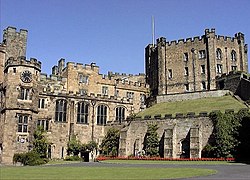 Durham Castle - view from within the Castle courtyard | |
| Type: | Norman |
| Location | |
| Grid reference: | NZ274423 |
| Location: | 54°46’30"N, 1°34’32"W |
| History | |
| Information | |
| Condition: | Good |
| Owned by: | University of Durham |
Durham Castle is a grand Norman castle in the city of Durham, the county town of County Durham. For many centuries the citadel and residence of the Bishops of Durham, it has since 1840 been wholly occupied by University College, Durham. The castle is open to the general public to visit, but only through guided tours, since it is in use as a working building and is home to over 100 students.
The castle stands on top of a hill above the River Wear on Durham's peninsula, opposite Durham Cathedral.
History
The castle was originally built in the 11th century by th new Norman kings, as a projection of royal power in the wild north of England. It is an example of the early motte and bailey castles favoured by the Normans. Soon palatine authority over the new county of Durham, with most of the authority of the king, was granted to the Bishops of Durham. The castle was the seat of the new 'Prince-Bishops'.
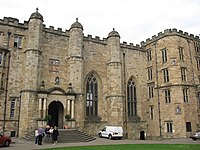
The castle remained the bishop's palace until the palatine jurisdiction was removed and vested in the Crown. The Bishops of Durham then made Auckland Castle their primary residence and the castle was granted to the new University of Durham, becoming University College.
The castle has a large Great Hall, created by Bishop Antony Bek in the early 14th century. It was the largest Great Hall in Britain until Bishop Richard Foxe shortened it at the end of the 15th century. However, it is still 46 feet high and 100 feet long.
University College
In 1837, the castle was donated to the newly formed University of Durham by Bishop Edward Maltby as accommodation for students. It was named University College. Anthony Salvin, the architect, rebuilt the dilapidated keep from the original plans. Opened in 1840, the castle still houses over 100 students, most of whom are in the keep.
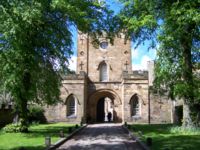
Students and staff of the college eat their meals in Bishop Bek's Great Hall. The Great Hall's Undercroft, meanwhile, serves as the Junior Common Room, including its bar - i.e. as the principal common room for the college's undergraduate members. The two chapels are still used, both for services and other purposes such as theatrical performances. Other facilities contained within the castle include the college's library, the college offices, and the college's IT suite. During university vacations, the college offers rooms in the castle for (usually academic) conferences and as hotel accommodation. Access to the castle for the public is restricted to guided tours. Outside of these, only members of the college or vacation guests may visit the castle.
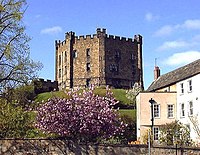
Chapels
The college makes extensive use of the castle's two chapels: the Norman Chapel, built around 1078, and Tunstall's Chapel, built in 1540.
The Norman Chapel is the oldest accessible part of the castle. Its architecture is Anglo-Saxon in nature, possibly due to the English labour being used to build it. In the 15th century, its three windows were all but blocked up because of the expanded keep. It thus fell into disuse until 1841 when it was used as a corridor through which to access the keep. During the Second World War, the chapel was used as a command and observation post for the Royal Air Force when its original use was recognised. It was re-consecrated shortly after the war and is still used for weekly services by the college.
Tunstall's Chapel is the more heavily-used of the chapels, being somewhat larger. Bishop Cosin and Bishop Crewe extended it in the late 17th century. At the back of the chapel, some of the seats are 16th-century misericords (literally, mercy seats). These were designed such that a person standing for long periods of time could rest on a ledge of the upturned seat.
World Heritage Site
Durham Castle is jointly designated a UNESCO World Heritage Site with Durham Cathedral, a short distance across Palace Green.
| ("Wikimedia Commons" has material about Durham Castle) |
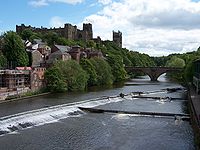 |
Outside links |
| World Heritage Sites in the United Kingdom |
|---|
|
Bath • Blaenavon Industrial Landscape • Blenheim Palace • Canterbury Cathedral, St Augustine's Abbey & St. Martin's Church • Castles and Town Walls of King Edward I • Cornwall and West Devon Mining Landscape • Derwent Valley Mills • Durham Castle & Cathedral • Edinburgh Old Town & New Town • Forth Bridge • Frontiers of the Roman Empire: Antonine Wall & Hadrian's Wall • Giant's Causeway • Ironbridge Gorge • Jurassic Coast • Kew Gardens • Liverpool Maritime Mercantile City • Maritime Greenwich • New Lanark • Heart of Neolithic Orkney • Pontcysyllte Aqueduct • St Kilda • Saltaire • Stonehenge, Avebury & Associated Sites • Studley Royal Park & Fountains Abbey • Tower of London • Palace of Westminster, Westminster Abbey & St Margaret's Church |
